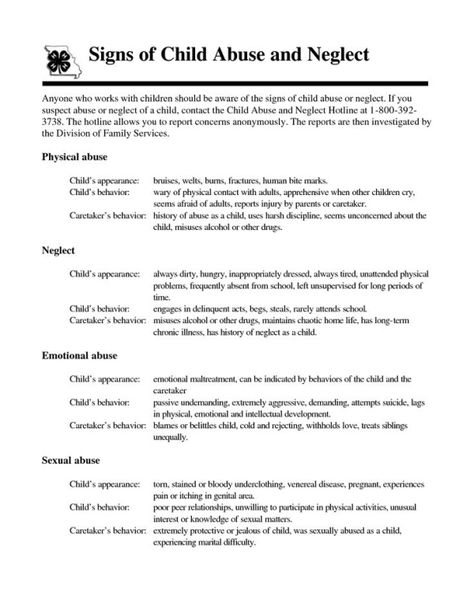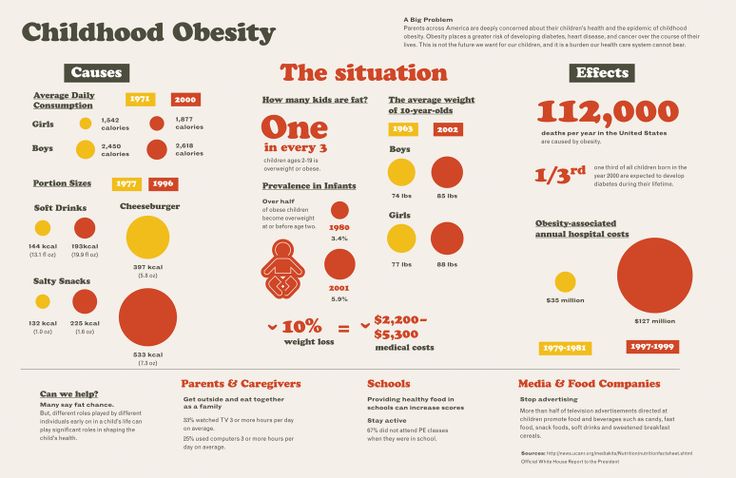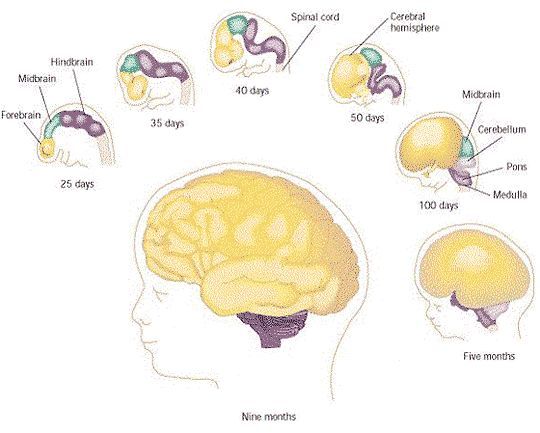Bonding and attachment in infants
Building a Secure Attachment Bond with Your Baby
parenting
Want to create a strong attachment with your newborn? These parenting tips can show you how to respond to your baby’s cues and ensure they have the best possible foundation for life.
What is secure attachment?
Attachment or the attachment bond is the unique emotional relationship between your baby and you, their primary caretaker. It is a key factor in the way your infant's brain organizes itself and how your child develops socially, emotionally, intellectually, and physically. The quality of the attachment bond varies.
- A secure attachment bond stems from the wordless emotional exchange that draws the two of you together, ensuring that your infant feels safe and calm enough to experience optimal development of their nervous system. Secure attachment provides your baby with the best foundation for life: an eagerness to learn, a healthy self-awareness, trust, and consideration for others.
- An insecure attachment bond, one that fails to meet your infant's need for safety and understanding, can lead to confusion about their own identity and difficulties with learning and relating to others in later life.
[Read: What is Secure Attachment and Bonding?]
| Myths and Facts about Secure Attachment |
| Myth: “My baby is attached to me because I gave birth to them.” Fact: Infants have independent nervous systems that may be different from yours. What makes you feel good may not be the same thing that makes your infant feel good. So unless you look and listen to your infant's emotional cues, you won't understand his or her individual needs. |
| Myth: “Secure attachment and love are the same thing.” Fact: Bonding and attachment happen instinctively between mothers and babies, but, unfortunately, loving your baby doesn't automatically result in secure attachment. |
| Myth: “I am having a hard time reading my baby's signs and I can't always figure out what he or she wants, so my baby must not be securely attached.” Fact: It is not possible or necessary to understand your baby's emotional needs all the time in order to develop a secure attachment bond. As long as you recognize the disconnect and attempt a repair, the relationship will stay strong and may even grow stronger as a result of repairing the disconnect. |
Myth: “Always responding to their needs makes babies spoiled.” Fact: On the contrary, the more responsive you are to an infant's needs, the less “spoiled” the baby will become as they get older. Bonding creates trust, and children with secure attachments tend to be more independent, not less. |
| Myth: “Babies can have a secure attachment bond with more than one person.” Fact: Babies form a secure attachment with only one person – the person who spends the most time caring for them. However, they can bond or connect in a loving way with all those people who take care of them. |
| Myth: “Secure attachment is a one-way process that focuses on accurately reading my baby's cues.” Fact: Attachment is a two–way, interactive process in which your baby reads your cues as you read theirs. |
What is the secure attachment process?
The attachment process is interactive and dynamic. Both you and your baby participate in an exchange of nonverbal emotional cues that make your baby feel understood and safe. Even in the first days of life, your baby picks up on your emotional cues—your tone of voice, your gestures, and your emotions—and sends you signals by crying, cooing, mimicking facial expressions, and eventually smiling, laughing, pointing, and even yelling, too.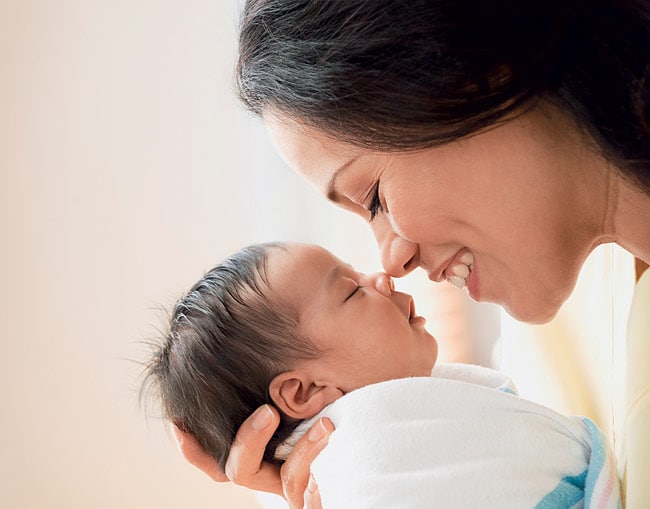 In return, you watch and listen to your baby's cries and sounds, and respond to their cues, at the same time as you tend to their need for food, warmth, and affection. Secure attachment grows out of the success of this nonverbal communication process between you and your baby.
In return, you watch and listen to your baby's cries and sounds, and respond to their cues, at the same time as you tend to their need for food, warmth, and affection. Secure attachment grows out of the success of this nonverbal communication process between you and your baby.
Why is secure attachment so important?
A secure attachment bond teaches your baby to trust you, to communicate their feelings to you, and eventually to trust others as well. As you and your baby connect with one another, your baby learns how to have a healthy sense of self and how to be in a loving, empathetic relationship.
Secure attachment causes the parts of your baby's brain responsible for social and emotional development, communication, and relationships to grow and develop in the best way possible. This relationship becomes the foundation of your child's ability to connect with others in a healthy way. Qualities that you may take for granted in adult relationships—like empathy, understanding, love, and the ability to be responsive to others—are first learned in infancy.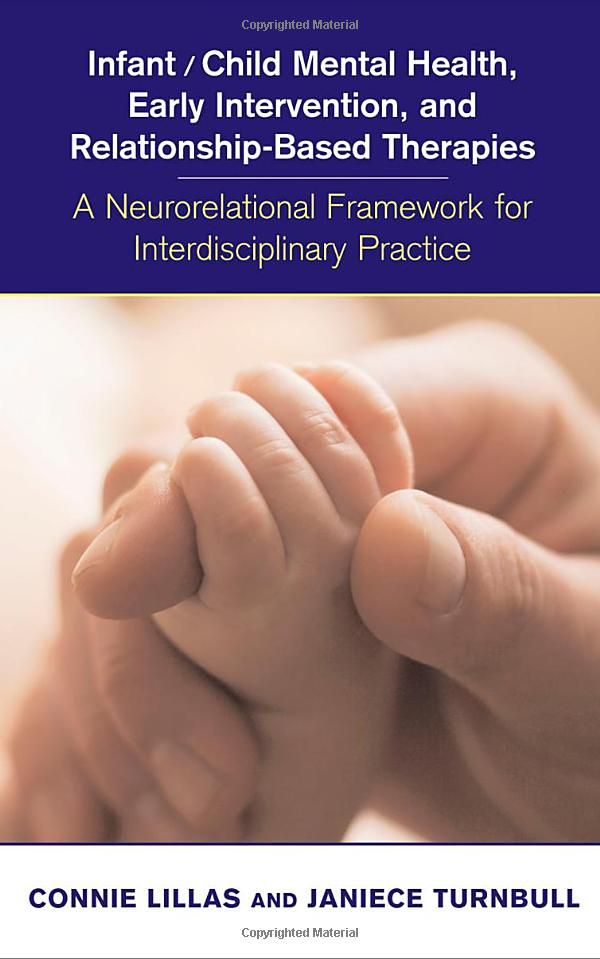
When babies develop a secure attachment bond, they are better able to:
- Develop fulfilling intimate relationships.
- Maintain emotional balance.
- Feel confident and good about themselves.
- Enjoy being with others.
- Rebound from disappointment and loss.
- Share their feelings and seek support.
A secure attachment bond is good for you, too
Nature has programmed mothers as well as their infants to have a “falling in love” experience through secure attachment. The joy you experience as you connect with your infant goes a long way to relieve fatigue from lack of sleep and the stress of learning how to care for your baby. The bonding process releases endorphins in your body that motivate you, give you energy, and make you feel happy. Creating a secure attachment with your infant may take a little effort, but the rewards are huge for both of you.
Parenting tips for creating secure attachment
Secure attachment doesn't happen overnight.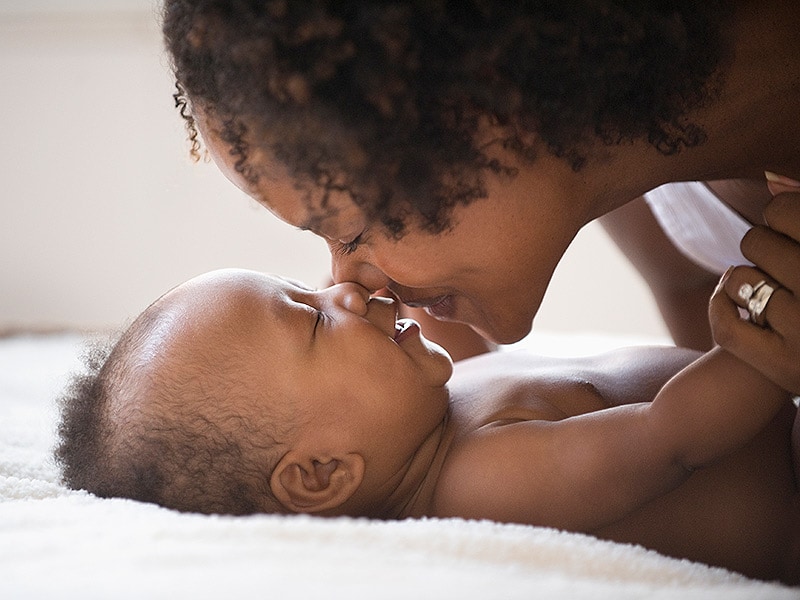 It is an ongoing partnership between you and your baby. As time goes on, it will become easier to understand the cries, interpret the signals, and respond to your baby's needs for food, rest, love, and comfort—try to stay patient with yourself and your baby as you learn about each other.
It is an ongoing partnership between you and your baby. As time goes on, it will become easier to understand the cries, interpret the signals, and respond to your baby's needs for food, rest, love, and comfort—try to stay patient with yourself and your baby as you learn about each other.
[Watch: Creating Secure Infant Attachment]
Secure attachment starts with taking care of yourself
Babies communicate most effectively when they are in a quiet and alert state, and so do you. As hard as it may be, it is important to take care of yourself in order to build a secure attachment bond with your infant.
Try to get enough sleep. Sleep deprivation can make you cranky, listless, and irritable. Some parents have found it helpful to trade night duty (on for two nights, off for two nights), or to take at least one morning a week to sleep late.
Ask for support around the house. Especially in the newborn stages, get as much help as you can from your spouse, family, or friends.
Schedule some time away. Caring for a young infant is demanding, and taking some time away can help you parent more effectively. An hour in a coffee shop, a walk, a yoga class, or doing something you want to do can provide some perspective and renewed energy.
Finding ways to calm yourself in stressful times
Since babies can't communicate verbally, they are especially attuned to signs of anxiety or stress. Babies need outside help to calm down. But an anxious caregiver can actually add to the baby's stress, making them harder to soothe. When you are feeling stressed, try to find ways to calm down before you interact with your baby.
Take a deep breath. This may mean letting your baby cry a minute longer so that you can take a deep breath before picking your baby up and trying to soothe them.
Team up. Don't think you have to do it all yourself. Try to enlist the help of your spouse, friends, family members, or a babysitter to help hold or care for your baby during fussy times of the day.
Take a walk. Fresh air and a change of scenery can work wonders for you and your baby. During particularly stressful times, try making a change in environment and see if it helps you and your baby calm down.
With over 25,000 licensed counselors, BetterHelp has a therapist that fits your needs. Sign up today and get matched.
GET 20% OFF
Creating secure attachment tip 1: Learn to understand your baby's unique cues
As parents of multiple children know, there is no one simple formula for meeting a baby's needs. From birth, each baby has a unique personality and preferences. Each baby's nervous system is unique as well. Some babies might be soothed by noise and activity whereas others might prefer calm and quiet. The key is to learn your baby's cues and respond to them accordingly.
Even though all of the sounds and cries may sound the same at first, your baby is communicating with you in different ways, using sound and movement. An arched back, a scrunched-up face, eyes tightly closed, fists curled up, rubbing eyes, hyperactive or frenetic movement—all of these signs communicate something specific about your baby's emotional and physical state. Your task is to become a “sensory detective” and find out what your baby is communicating and how best to respond.
Your task is to become a “sensory detective” and find out what your baby is communicating and how best to respond.
- Watch your baby's facial expressions and body movements for clues about their sensory needs. For example, your baby may adjust their body position or change their facial expression, or move their arms and legs in response to your voice, to indicate that they're cold or need to be held and cuddled.
- Become familiar with the kinds of sounds your baby makes and what these sounds mean. For example, the “I'm hungry” sound may be a short, low-pitched cry, while the “I'm tired” sound may be a choppy wail.
- Note the kind of touch your baby enjoys and the amount of pressure that they experience as pleasurable. With almost every touch your newborn is learning about life. The more tender your touch, the more your baby will find the world a comforting place.
- Pay attention to the kinds of movements, sounds, and environments your baby enjoys. Some babies are comforted by motion, such as rocking or being walked back and forth, while others respond to sounds like soft music, or a change of environment such as being carried outside.
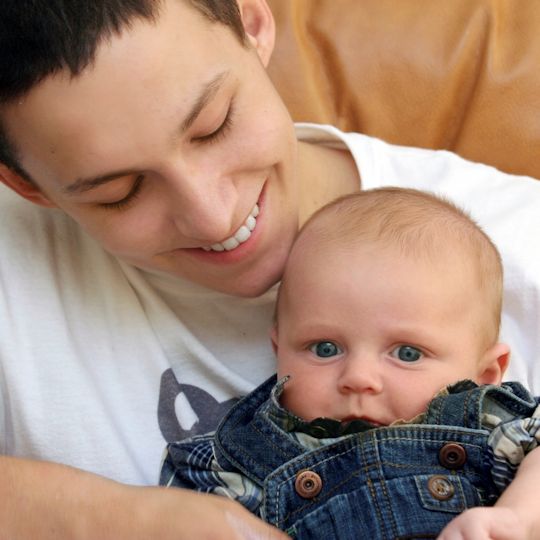
Sometimes babies will fuss no matter what you do, as when teething, sick, or undergoing a big developmental change. When this happens, keep up your efforts to communicate with and soothe your baby. Your patience, love, and care benefit your baby even if they continue to fuss.
Watch out for peer pressure from well-meaning family and friends. What worked for their baby may not work for yours. By learning what it takes to calm and soothe your baby, you initiate trust, and your baby begins the process of learning how to self soothe.
Tip 2: Eating, sleeping and opportunities for secure attachment
Many of your baby's early signs and signals are about the need for food and proper rest. Increasing the frequency of feedings or adding in some extra time for rest where appropriate can make a big difference in your baby's ability to engage and interact when awake.
[Read: When Your Baby Won't Stop Crying]
Without proper rest, a baby cannot be calm and alert and ready to engage with you. Babies sleep a lot (often 16-18 hours a day in the first few months), and their sleep signals will come more often than you might expect. Often, babies who are overtired can act hyper-alert and move frenetically. You might mistake this energy for an invitation to engage, but really, it is your baby's way of saying that naptime should have been 30 minutes ago.
Babies sleep a lot (often 16-18 hours a day in the first few months), and their sleep signals will come more often than you might expect. Often, babies who are overtired can act hyper-alert and move frenetically. You might mistake this energy for an invitation to engage, but really, it is your baby's way of saying that naptime should have been 30 minutes ago.
Hunger will also be the cause of many early cues from your baby. Schedules are helpful, but growth spurts and developmental changes may cause your baby's needs to change every few weeks so it is helpful to pay close attention to their unique signs and signals.
ADVERTISEMENT
Tip 3: Talk, laugh, and play with your infant
The importance of having fun, playing with, holding, and sharing happiness with your baby cannot be overstated. Smiles, laughter, touch, and interaction are as important to a baby's development as food or sleep. Your body language, tone of voice, and loving touch are all important ways of communicating with your baby.
When you see signs that your baby wants to play, try to relax and then enjoy exchanging smiles, funny faces, and happy coos with your baby. Toys, books, and music can provide a helpful starting point for play, but often all it takes is a game of peek-a-boo or a silly voice to invite your baby to interact. Infants with an undeveloped nervous system can become exhausted very quickly, so watch for signs that your infant needs to withdraw from play because they have become over stimulated. If you feel uncomfortable or unsure about how to play with your baby, keep trying. Any discomfort or embarrassment should go away when you experience the joys of interacting with your child.
Tip 4: Secure attachment doesn't require you to be the “perfect” parent
You don't have to be a perfect parent all of the time in order to bond with your baby. Just do your best, and don't worry if you don't always know what your baby wants. What makes attachment secure, rather than insecure, is the quality and responsiveness of the interaction with your baby and a willingness to notice and repair a missed signal.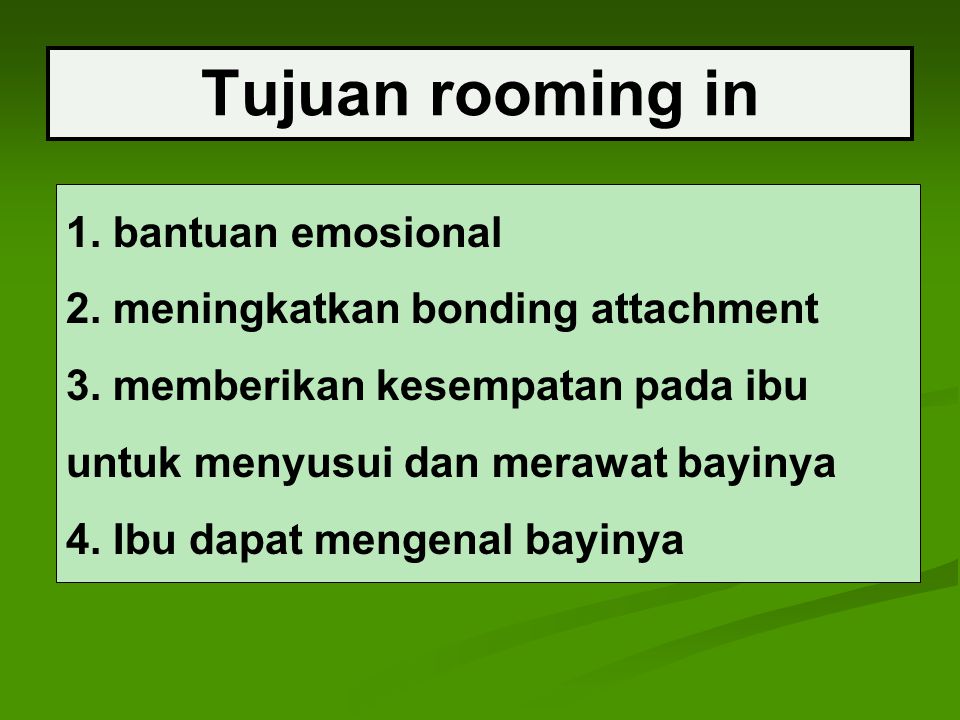
You need to understand your baby's cues half of the time, not every time
You don't have to be perfect to have a secure attachment with your infant. As long as you notice when you have missed your infant's cue and continue trying to figure out what your baby needs, the secure attachment process stays on track. In fact, the process of realizing there's a disconnect between you and attempting to repair it may even strengthen the relationship you have with your infant.
Parenting is frequently touted as the hardest job you will ever do. It is amazing how one tiny being can require so much work. But no one is able to be fully present and attentive to an infant 24 hours a day. Every parent needs help and support in order to stay relaxed, calm, and engaged.
Tip 5: Don't overlook dads in the process of secure attachment
In households where the mother is the breadwinner and dad stays at home, it is equally important for the father—as the infant's primary caretaker—to connect emotionally with his baby.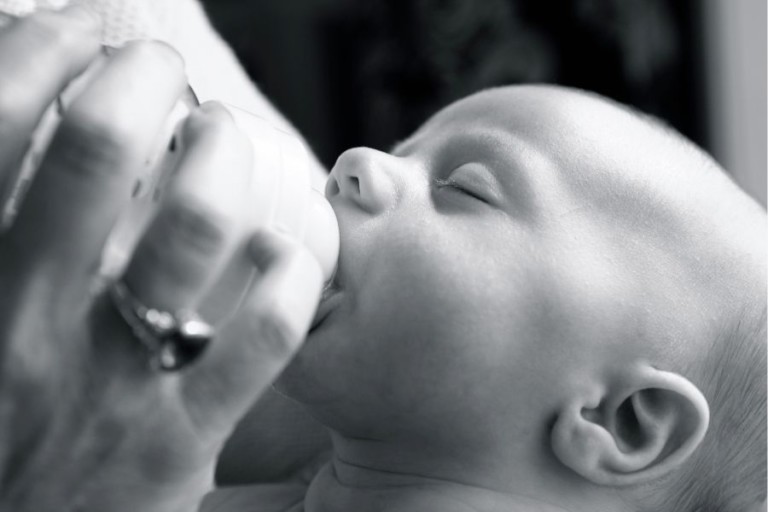 The kind of multitasking required to care for a baby while simultaneously interconnecting emotionally with the infant can be harder for fathers (information travels more easily across the part of the brain known as the corpus callosum in women, making multitasking of this nature easier). However, with a little more effort, dads can still achieve the same results.
The kind of multitasking required to care for a baby while simultaneously interconnecting emotionally with the infant can be harder for fathers (information travels more easily across the part of the brain known as the corpus callosum in women, making multitasking of this nature easier). However, with a little more effort, dads can still achieve the same results.
Dads, as the primary caretakers of their baby, can share activities that include:
- Bottle feeding. As a dad, you can form a special bond with your infant when handling feedings and diaper changes by looking into baby's eyes, smiling, and talking.
- Talking, reading, or singing to your baby. Even though your baby doesn't understand what you're saying, hearing your calm, reassuring voice conveys safety.
- Playing peek-a-boo and mirroring your baby's movements.
- Mimicking your baby's cooing and other vocalizations.
- Holding and touching your baby as much as possible. You can keep baby close by using a front baby carrier, pouch, or sling during daily activities.

- Letting baby feel the different textures of your face.
Challenges to creating secure attachment with your baby
Ideally, a secure attachment bond develops without a hitch. But if either you or your baby is dealing with a problem that interferes with your ability to relax and focus on one another, a secure attachment bond can be delayed or interrupted.
Challenges in babies that can affect secure attachment
Most babies are born ready to connect to their caregivers, but sometimes babies have problems that get in the way of secure attachment. These include:
- Babies with compromised nervous systems.
- Babies who experienced problems in the womb or in delivery.
- Babies with health problems at birth or at a very early age.
- Premature babies who spent time in intensive care.
- Babies who were separated from their primary caretakers at birth.
- Babies who have experienced a series of caretakers.
The sooner more challenging problems are identified, the easier they are to correct. For help, you can turn to your pediatrician, an infant mental health specialist, or someone trained in early intervention.
For help, you can turn to your pediatrician, an infant mental health specialist, or someone trained in early intervention.
Challenges in parents that can affect secure attachment
Parents who themselves did not experience a secure attachment bond when they were infants may have trouble emotionally connecting with their babies. Other challenges that can get in the way of your ability to bond with your baby include:
- Depression, anxiety, or other emotional problems.
- Drug or alcohol problems.
- High levels of stress (from financial problems, lack of support, overwork, etc.).
- An abusive, neglected, or chaotic childhood history.
- Living in an unsafe environment.
- Mainly negative memories of your own childhood experiences.
Advertisement
Reduce Stress, Enhance Your Health and Achieve Balance in Your Life
Learn how Mindfulness-Based Stress Reduction (MBSR) can help you to experience less anxiety, less stress, and less physical and emotional pain and illness with this online program from Sounds True.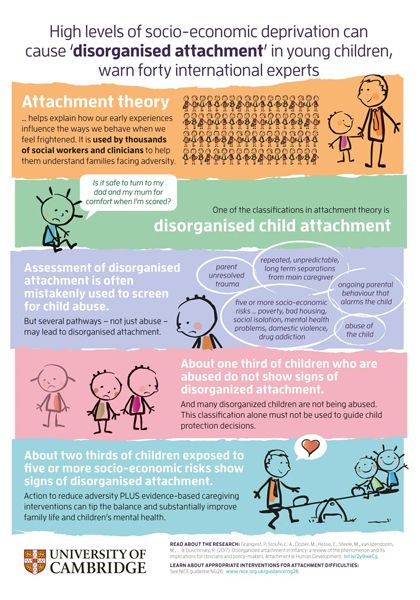
SIGN UP TODAY
Authors: Lawrence Robinson, Joanna Saisan, M.S.W., Melinda Smith, M.A., and Jeanne Segal, Ph.D.
- References
Building a secure attachment with your child—Better Kid Care—Penn State Extension. (n.d.). Retrieved July 12, 2022, from https://extension.psu.edu/programs/betterkidcare/parents-families/families-count/building-a-secure-attachment-with-your-child
Cassidy, J., Jones, J. D., & Shaver, P. R. (2013). Contributions of attachment theory and research: A framework for future research, translation, and policy. Development and Psychopathology, 25(4pt2), 1415–1434. https://doi.org/10.1017/S0954579413000692
Ingalhalikar, M.
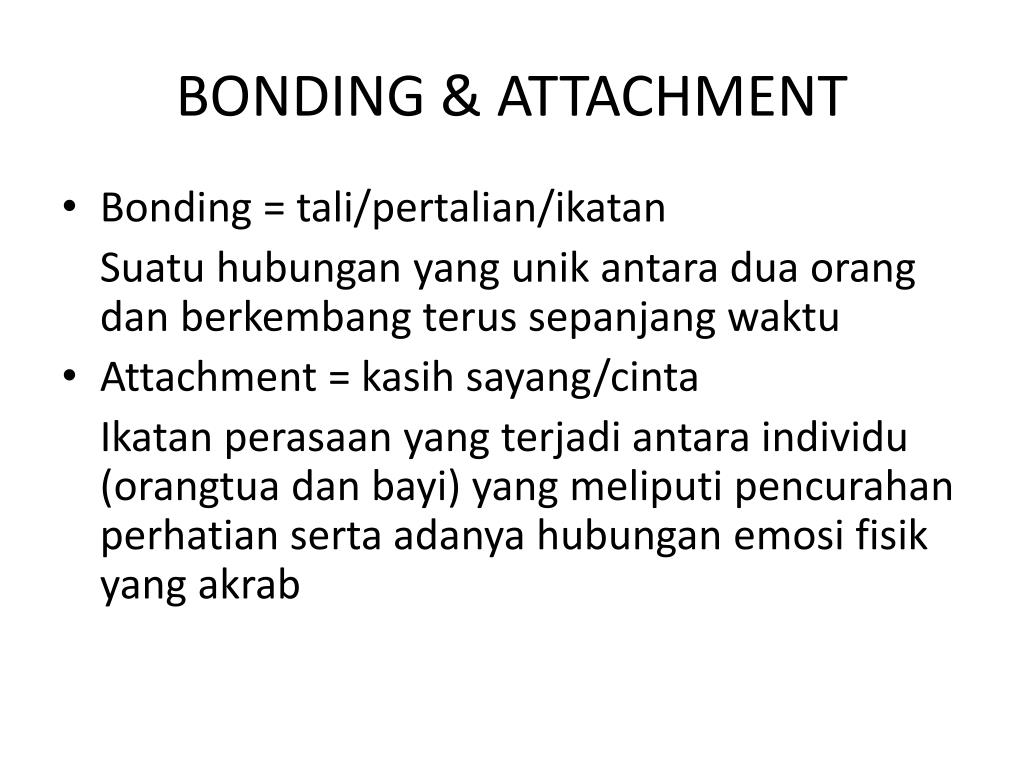 , Smith, A., Parker, D., Satterthwaite, T. D., Elliott, M. A., Ruparel, K., Hakonarson, H., Gur, R. E., Gur, R. C., & Verma, R. (2014). Sex differences in the structural connectome of the human brain. Proceedings of the National Academy of Sciences, 111(2), 823–828. https://doi.org/10.1073/pnas.1316909110
, Smith, A., Parker, D., Satterthwaite, T. D., Elliott, M. A., Ruparel, K., Hakonarson, H., Gur, R. E., Gur, R. C., & Verma, R. (2014). Sex differences in the structural connectome of the human brain. Proceedings of the National Academy of Sciences, 111(2), 823–828. https://doi.org/10.1073/pnas.1316909110Lee, A., & Hankin, B. L. (2009). Insecure Attachment, Dysfunctional Attitudes, and Low Self-Esteem Predicting Prospective Symptoms of Depression and Anxiety During Adolescence. Journal of Clinical Child & Adolescent Psychology, 38(2), 219–231. https://doi.org/10.1080/15374410802698396
Newborn sleep patterns: A survival guide. (n.d.). Retrieved July 12, 2022, from https://parentingscience.com/newborn-sleep/
The Neurobiology of Attachment to Nurturing and Abusive Caregivers—PMC. (n.d.). Retrieved July 12, 2022, from https://www.ncbi.nlm.nih.gov/pmc/articles/PMC3774302/
Woodhouse, S. S., Scott, J. R., Hepworth, A. D.
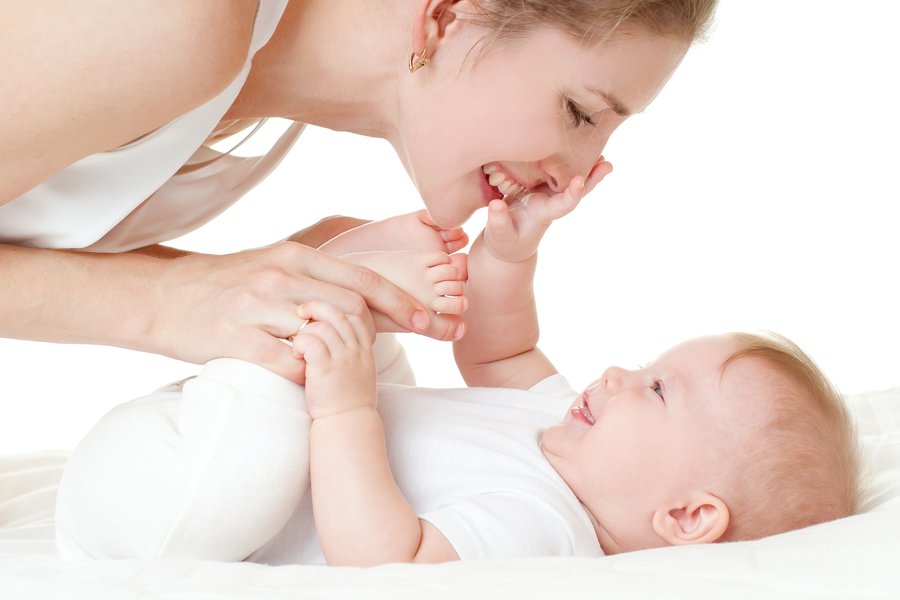 , & Cassidy, J. (2020). Secure Base Provision: A New Approach to Examining Links Between Maternal Caregiving and Infant Attachment. Child Development, 91(1). https://doi.org/10.1111/cdev.13224
, & Cassidy, J. (2020). Secure Base Provision: A New Approach to Examining Links Between Maternal Caregiving and Infant Attachment. Child Development, 91(1). https://doi.org/10.1111/cdev.13224ScienceDaily. “‘Good Enough’ Parenting Is Good Enough, Study Finds.” Accessed July 20, 2022. https://www.sciencedaily.com/releases/2019/05/190508134511.htm
Forming Secure Attachment (VIDEO) – Short video from HelpGuide's co-founder, Dr. Jeanne Segal, Ph.D. (kidsinthehouse)
Bonding with your Baby – Why bonding is important, how your baby interacts, and ways to get support. (KidsHealth)
Attachment: The First Core Strength – What you can do to promote secure attachment. (Scholastic.com)
Developmental Milestones – Detailed list about developmental milestones that relate to bonding. (CDC)
Learning, Play and Your Newborn – Play is the chief way that infants learn how to move, communicate, socialize, and understand their surroundings. (KidsHealth)
Communication and your newborn – Learn how newborns communicate and what to do if you suspect a problem.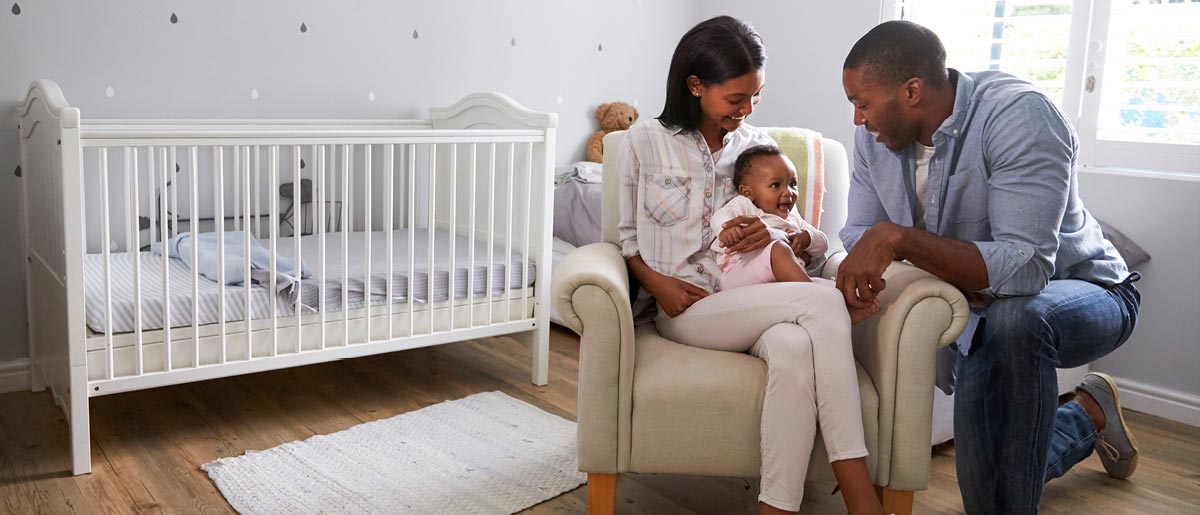 (Kids Health)
(Kids Health)
Last updated: November 23, 2022
The Importance of Infant Bonding
When a caregiver consistently responds to an infant’s needs, it sets the stage for the growing child to enter healthy relationships with other people throughout life and to appropriately experience and express a full range of emotions.
By Mary Beth Steinfeld, M.D.
The process of bonding with a new baby is natural for most mothers. Left alone, new mothers will hold their baby next to their bodies, rock them gently, strive for eye contact, sing or talk to the baby and begin to nurse. Often within just hours of birth, mothers report feelings of overwhelming love and attachment for their new baby.
A normal, full-term baby is also programmed to initiate and enter into a bonding relationship. Crying and making other noises, smiling, searching for the breast, and seeking eye contact give cues for a caring adult to respond.
When a caregiver consistently responds to an infant’s needs, a trusting relationship and lifelong attachment develops.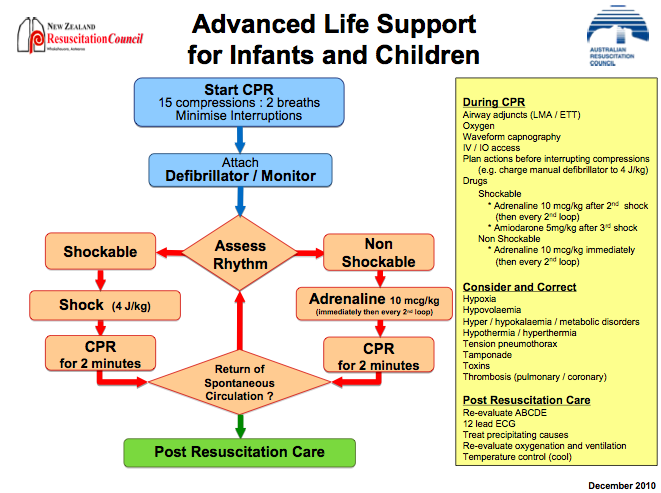 This sets the stage for the growing child to enter healthy relationships with other people throughout life and to appropriately experience and express a full range of emotions.
This sets the stage for the growing child to enter healthy relationships with other people throughout life and to appropriately experience and express a full range of emotions.
An optimum opportunity
Dr. Steinfeld is a developmental and behavioral pediatrician at UC Davis Medical Center and UC Davis Children's Hospital in Sacramento.
But what happens when things don’t work out so well? What if babies and their mothers are separated at birth, as when babies are premature or ill and need special care? Or babies who are placed for adoption and may not meet their adoptive mother for quite some time after birth? Sometimes a new mother feels depressed or incapacitated after delivery and doesn’t feel like interacting with her newborn.
Fortunately, humans are not completely dependent on those early moments and have many opportunities to bond appropriately throughout the first year of life. We know that mothers who adopt babies and even older children are able to form normal attachment relationships.
Still, the first few days of life are believed to offer an optimum opportunity for bonding to take place. Standard practice in most U.S. hospitals allows mothers and babies as much time as possible together after birth. Even when babies are born ill or premature, the importance of bonding is recognized. Whenever possible, health care providers in intensive care units try to create opportunities for parents to spend time holding and caring for their babies.
Dads and siblings, too
Babies who are held and comforted when they need it during the first six months of life tend to be more secure and confident as toddlers and older children.
Is it important for fathers to bond with their babies? Absolutely. New fathers often feel less confident than new mothers around a baby, and may feel excluded in the close relationship that develops between the mother and baby. If a baby is breastfed, fathers may be uncertain about what activities they can engage in with the new baby.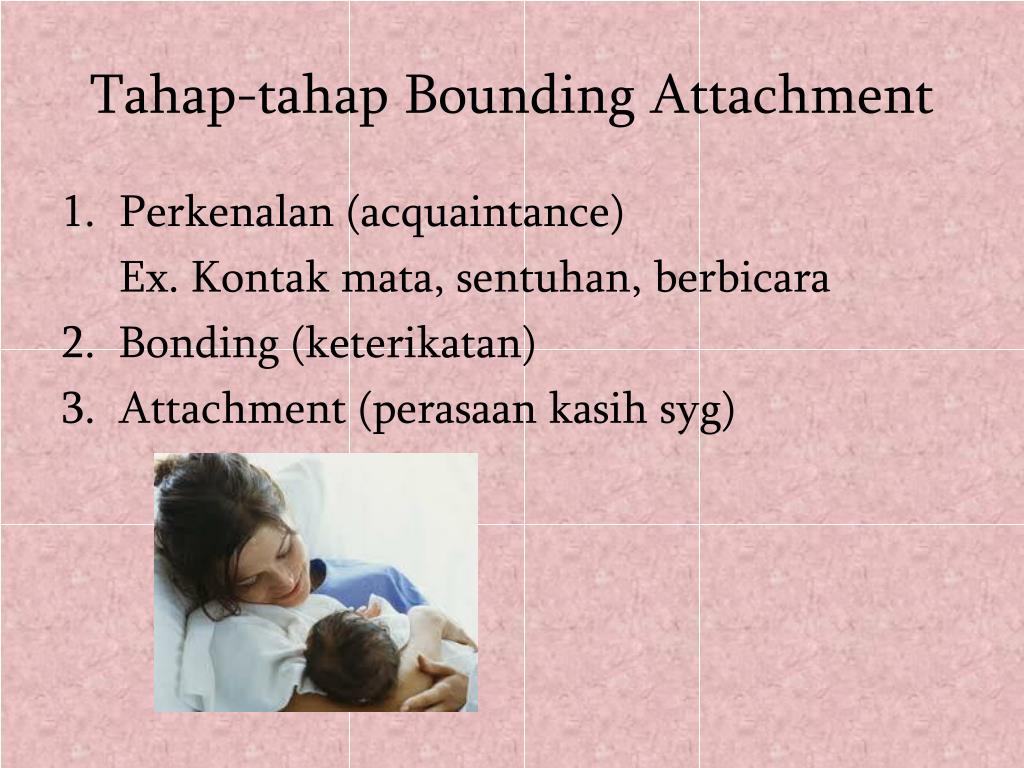
Like mothers, fathers need quiet time to spend holding their new babies close, gazing into their eyes, talking to them and comforting them when distressed. Fathers may wish to take walks with their babies tucked into a Snugli-type carrier or simply hold a quiet baby while reading or watching TV.
Brothers and sisters also need time and opportunities to establish a relationship with a new baby. You might offer young children who are too unreliable to hold a baby safely to have brief, supervised periods playing next to a brother or sister in a large crib or playpen. Such times often elicit unique responses of excitement and joy from the baby and allow loving relationships to develop successfully.
The 'spoiling' myth
While bonding does not occur instantly for everyone, it should be well established within the first few months after you bring your baby home.
The importance of bonding with the primary caregiver cannot be overestimated. Failure to do so profoundly affects future development and the ability to form healthy relationships as an adult.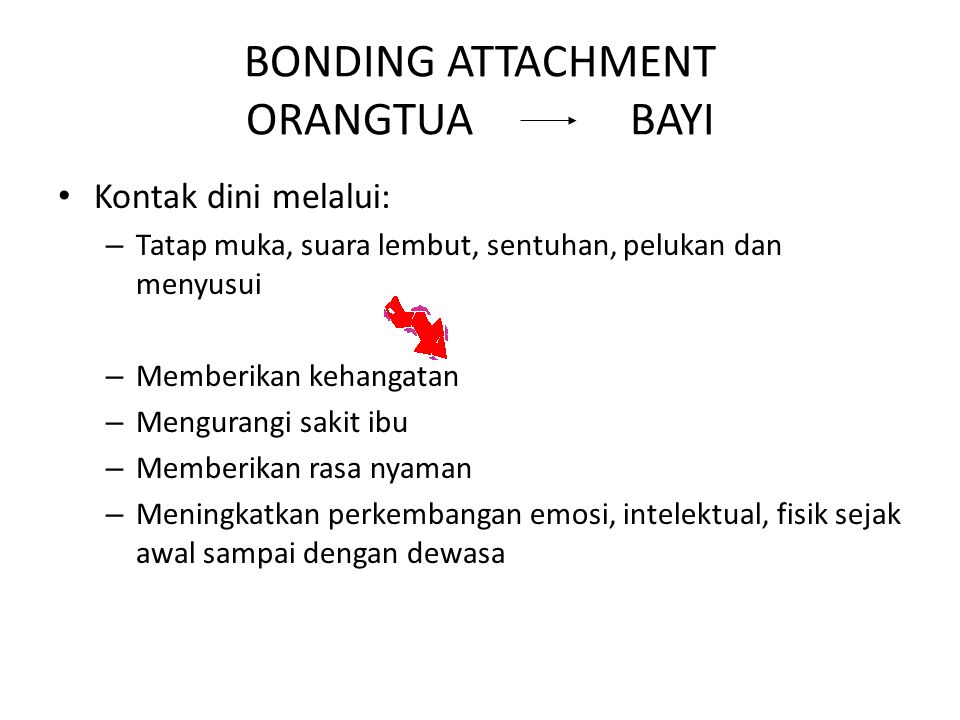
I urge parents to give themselves plenty of time with their baby and to follow their instincts. Respond to the baby’s cues, and offer love and comfort when distressed.
Contrary to the “wisdom” in past generations, responding quickly to crying with holding and nursing will not “spoil” a baby. Instead, babies who are held and comforted when they need it during the first six months of life tend to be more secure and confident as toddlers and older children.
Seek help if you feel that bonding is not progressing as it should. While bonding does not occur instantly for everyone, it should be well established within the first few months after you bring your baby home. For any problem with your baby, ask your physician for help if you feel there is something wrong.
Intimacy and affection: newborns | Bebbo
Submitted by IlyaDanshyn-Global on Mon, 06/06/2022 - 13:26
About intimacy and attachment after childbirth
Intimacy and attachment means constantly responding to the needs of the newborn with manifestations of love, warmth and care.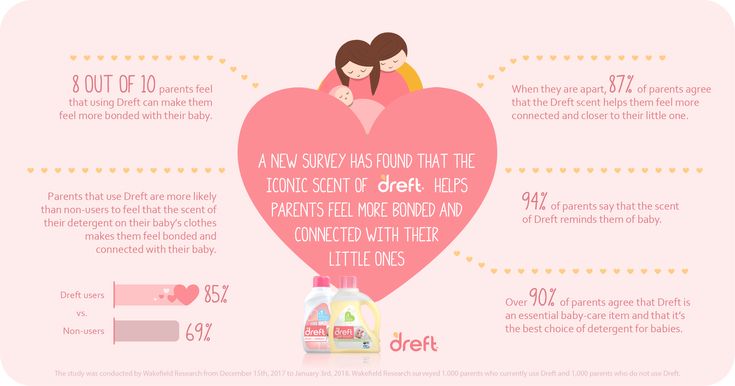 In this way, you become a special person in your baby's life - a person whom he trusts.
In this way, you become a special person in your baby's life - a person whom he trusts.
Intimacy between you and your newborn is a vital part of development .
For example, when your newborn gets what he needs from you, such as a smile, a touch, or a hug, he feels the world is a safe place to play, learn, and explore. This lays the foundation for the 's emotional well-being and ability to overcome difficulties later in life. Closeness and affection also help your child develop mentally and physically. For example, constant human contact—touching, hugging, talking, singing, and looking into each other's eyes—causes your newborn's brain to release hormones. These hormones help your baby's brain grow. And as his brain grows, memory, thinking and language develop.
Understanding your baby's behavior in terms of closeness and affection
Your baby tells you through facial expressions, gestures and movements when he needs something, such as food or a diaper change. In the same way, the baby shows when he wants communication and intimacy. The manifestations of this can be very different:
In the same way, the baby shows when he wants communication and intimacy. The manifestations of this can be very different:
- smiling back at you or looking into your eyes - babies love to look into your eyes
- soft sounds such as cooing or laughing
- relaxed and interested look
- crying
When your baby is tired or perhaps needs a different, gentler approach, he may:
- turn away, close his eyes or yawn
- try to brush aside or move away
- look tense and anxious
- cry
When you learn to understand and respond to your child's signals, it will encourage him to communicate with you even more. This is an important moment for strengthening attachment, it also helps your child learn more about communication, behavior and emotions.
When you notice signals or gestures from a child, always respond with warmth and love - he will feel calm and confident. This will help you build a strong relationship with your baby.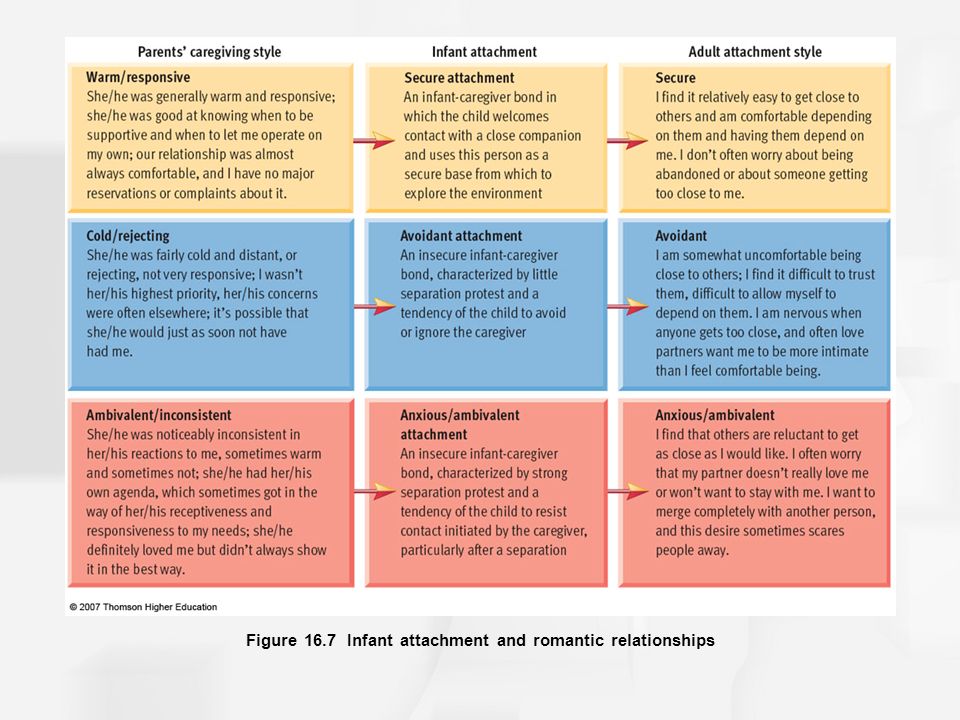
How to Form Attachment
Thanks to constant contact, in which tenderness and love are directed to the baby, he feels safe. Here are some tips:
- Touch and hug your newborn regularly. Try rocking or holding him close to you so he can feel body contact. Gently stroke it when you change a diaper or bathe.
- Respond to crying. You may not always understand why a baby is crying. But by reacting to this, you help him feel safe and calm.
- Make your newborn feel physically safe. When holding a baby, ensure that the head and neck are properly supported. Hugs and wraps help the baby recreate a sense of security in the womb.
Intimacy with a newborn is also formed when you give him the opportunity to look, listen and feel. This stimulates the work and development of his brain. Here are some tips:
- As often as possible talk to the infant in a soothing and reassuring tone.
 You can just say what you are doing now, or tell fairy tales. This will help your child learn to recognize the sound of your voice. It also encourages language development as the baby grows.
You can just say what you are doing now, or tell fairy tales. This will help your child learn to recognize the sound of your voice. It also encourages language development as the baby grows. - Sing songs. Your baby will most likely enjoy the sounds and rhythm of songs and music. Calming music can help him—and you—feel calmer. And the kid does not care at all whether you remember exactly the lyrics and the melody of the song.
- Look the baby in the eyes when you speak and sing, and also show him different facial expressions. This will help him understand the connection between words and feelings.
- Stimulate your baby's sense of touch. From birth, a baby can feel even the most gentle touch. Try gently stroking his feet with a soft cloth while you change the diaper. Speak out what is happening - for example, "Nice? Soft?"
Forming intimacy and affection can be difficult
You may have developed an immediate intimacy and attachment from the very first contact with your child.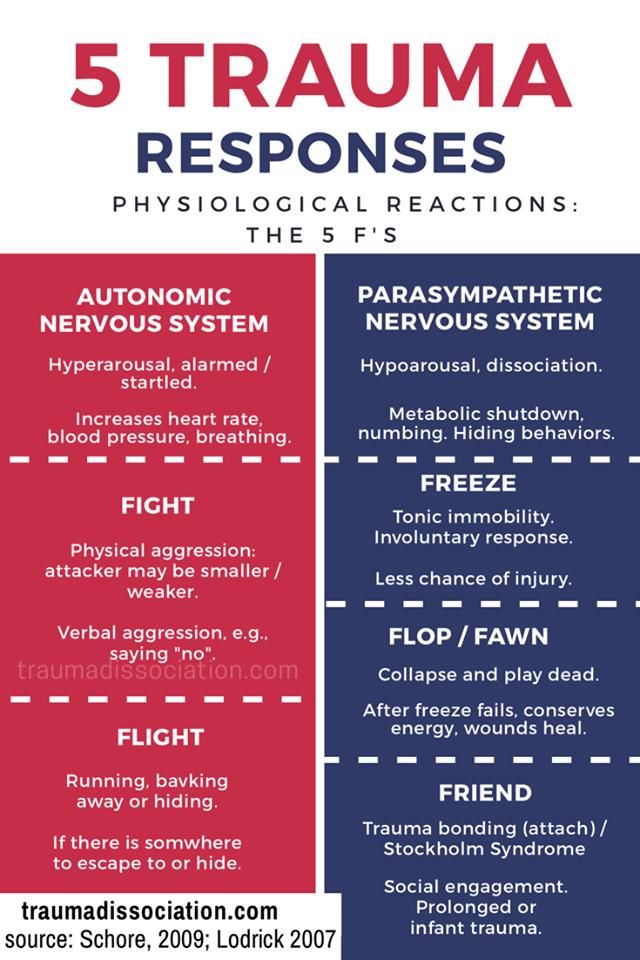 But it's quite normal if you don't feel anything special. Getting to know and understand your child can sometimes take weeks or months.
But it's quite normal if you don't feel anything special. Getting to know and understand your child can sometimes take weeks or months.
Here are some tips to help you:
- Take time to enjoy your baby. Caring for a newborn can be difficult, but even just spending time together can be very rewarding. For example, you hold a child in your arms and read something to him in a sing-song voice. He loves to hear your voice, even if you're just reading your favorite magazine or newspaper.
- See the world through your child's eyes. Imagine what he is looking at, feeling or trying to do. Try to understand what he really likes and what he doesn't like. Maybe he is happy to be socialized and enjoys spending time in the arms of different family members? Or does he prefer to watch what is happening without leaving your hands?
- Be flexible. Most newborns do not have a fixed sleep pattern during the day and night.
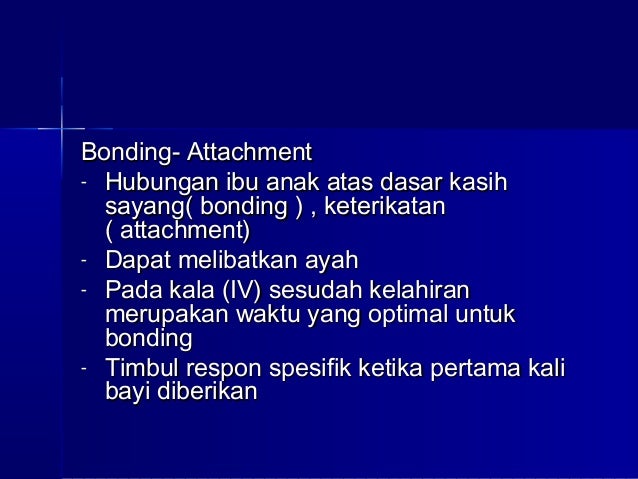 This means that you should not expect a newborn to follow a strict routine. The best response is when your child wants to eat, sleep, or play.
This means that you should not expect a newborn to follow a strict routine. The best response is when your child wants to eat, sleep, or play.
You are the most important part of your child's life. If you have doubts or questions about your relationship with your baby, get help - this can be very important for both of you, especially when your baby is very young. Feel free to ask for help or support - when you are physically and mentally well, it is easier for you to give your baby the love and care he needs.
Closeness with more than one caregiver
Your child forms attachments to the people who care most about him, such as you and your partner if you have one. He may also become attached to other people who regularly and lovingly care for him and give him a sense of security. Judging, his grandparents, nannies and older children enter.
Connecting with more than one person helps your child learn more about trust and intimacy . It can also make your life and other things easier, such as work, shopping, and household chores. It is also an important opportunity for you to take a breather.
It can also make your life and other things easier, such as work, shopping, and household chores. It is also an important opportunity for you to take a breather.
Australian Article
On
Cover Image
Image
© UNICEF/UN0269413/Graham AFP-Services
Keywords
Attaching baby to the breast
Getting baby to latch on
Getting baby to attach
Correct attachment
Good attachment
Attachment for breastfeeding
Breast feeding attachment
Breastfeeding attachment
Attachment
Bond between parent and child
bonding
Category
Mindful parenting
Child Age
1st month
2nd month
3–4 months
Child Gender
Both
Parent Gender
Both
Geneeric Content
OFF
License Content
OFF
PreMature Content 9000 OFF
MandATory Content
Intimacy and affection: newborns | Bebbo
Intimacy and Attachment After Birth
Intimacy and attachment means you are constantly responding to your newborn baby's needs with love, warmth and care. In this way, you become a special person in your child's life - someone whom he trusts.
In this way, you become a special person in your child's life - someone whom he trusts.
Intimacy between you and your newborn is a vital part of development.
When your baby gets what he needs from you, such as a smile, a touch or a hug, he feels that the world around him is a safe place to play, learn and explore. This lays the foundation for the 's emotional well-being and ability to overcome difficulties later in life.
Closeness and affection also contribute to your child's mental and physical development. For example, constant human contact—touching, hugging, talking, singing, and looking into each other's eyes—encourages your newborn's brain to release hormones that stimulate baby's development. As the baby's brain grows, various mental processes develop: perception, memory, thinking and speech.
Understanding your baby's behavior in the context of closeness and affection
Your baby tells you through facial expressions, gestures, movements and sounds when he needs something, such as food, rest or a diaper change.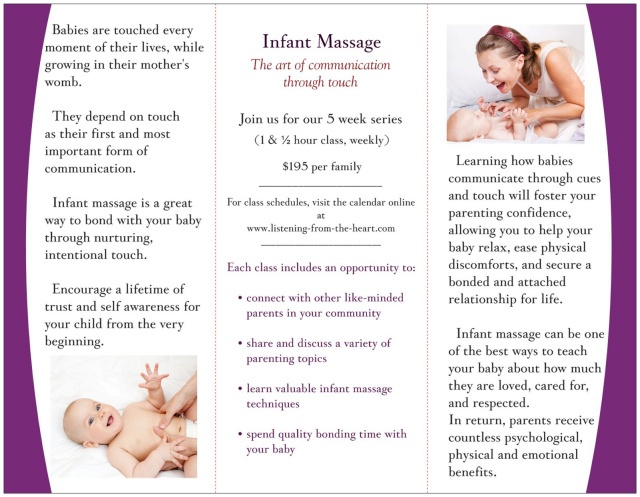 In the same way, the baby shows when he wants communication and intimacy. The manifestations of this can be very different:
In the same way, the baby shows when he wants communication and intimacy. The manifestations of this can be very different:
- a return smile or establishing and maintaining eye contact with you - babies love to look at the face of an adult and into the eyes;
- pronouncing quiet sounds - groaning, cooing or laughing;
- interested, enthusiastic or calm look;
- crying.
When your baby is tired or may need a change of activity, it may show up as follows:
- baby turns away, closes eyes or yawns;
- the baby waves or moves away;
- child looks tense or restless;
- the baby is crying.
Gradually, you will learn to understand your child's signals and respond to them correctly, and this will encourage the baby to communicate with you even more. Understanding, interpreting, your response are important steps in the formation and strengthening of secure attachment, which helps the baby learn more about communication, behavior and emotions.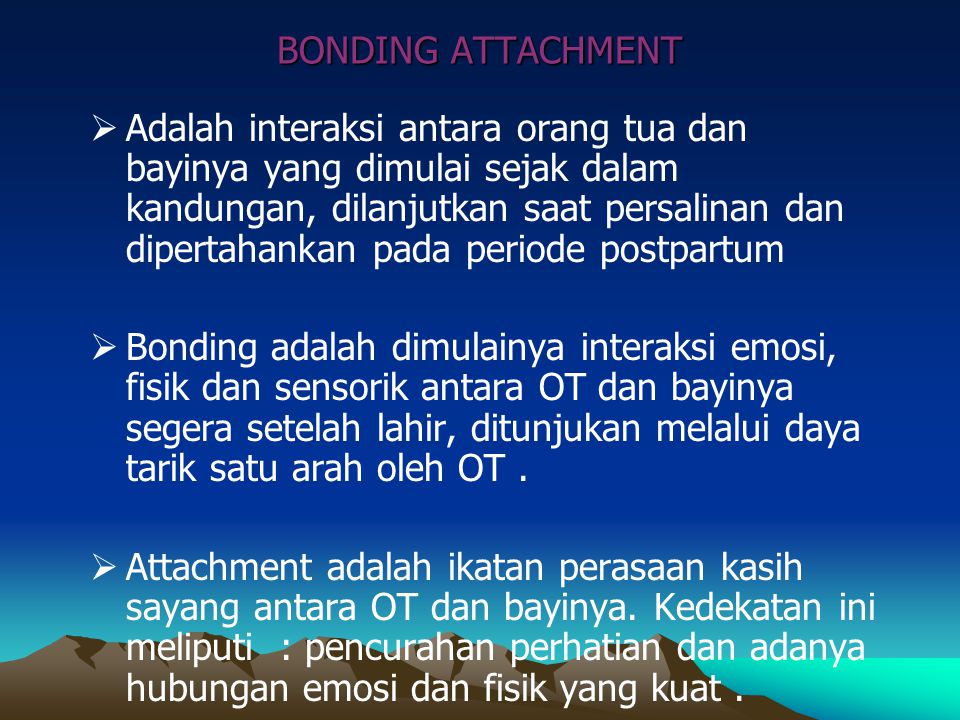
When you notice various signals (facial expressions, movements, vocalizations) from an infant, always respond to them with warmth and love. Thanks to this, the baby will feel calm and confident. Such interaction will help you build a stable and reliable relationship with your child.
How to form attachment
Thanks to constant contact and communication, in which your tenderness and love is directed to the baby, he feels safe. Here are some suggestions that can help you form a secure relationship:
- Touch and hug your newborn regularly. Rock him or hold him gently so that he feels body contact. Lightly stroke your baby when you change his diaper or bathe the baby.
- Respond to crying. You may not always understand why a baby is crying, but you can help him feel safe and calm by responding to his crying.
- Make your newborn feel physically safe. When holding a baby, ensure that the head and neck are properly supported.
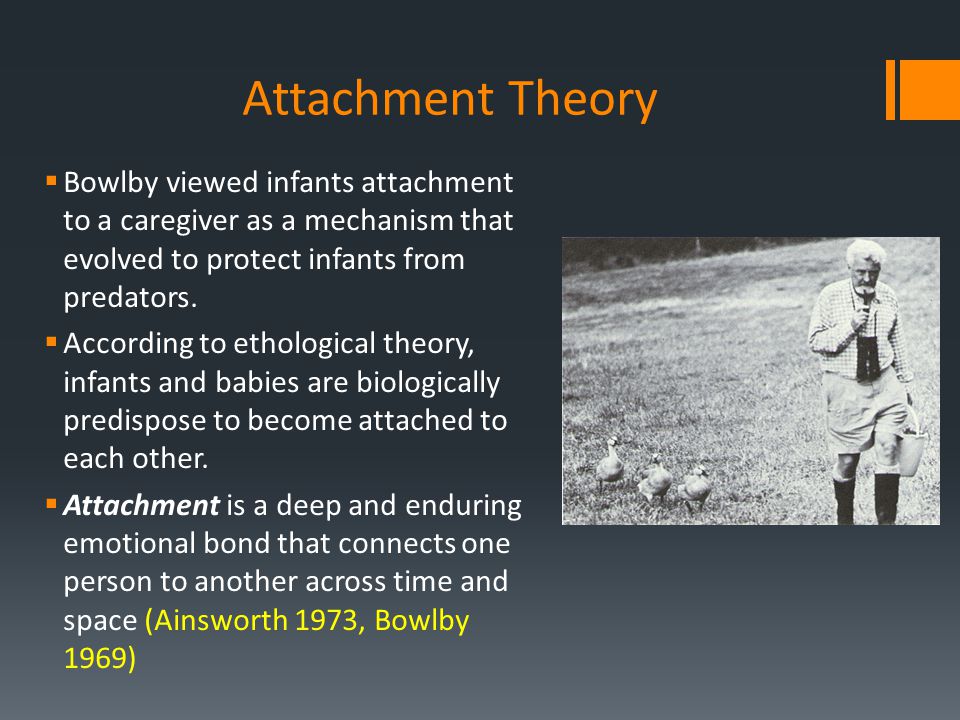 Hugs, loose swaddling, laying the baby in a limited space (cocoon) help to create a feeling of security in the baby, as in the womb.
Hugs, loose swaddling, laying the baby in a limited space (cocoon) help to create a feeling of security in the baby, as in the womb.
Intimacy with a newborn is also formed when you give him the opportunity to look, listen and feel. This stimulates the work and development of his brain. Here are some ways you can help:
- Talk to your baby as often as possible, using a soothing and gentle voice. You can simply describe in words what you are doing now, tell stories or read poetry. Thanks to this, the baby learns to recognize your voice and respond to it. Such communication is a prerequisite and stimulation of the child's speech development as he grows up.
- Sing songs. Your baby will most likely enjoy the sounds and rhythm of the songs and music. Soothing melodies help the baby and you feel at peace. In addition, the child does not care at all whether you remember exactly the lyrics or the melody of the song.
- Choose a comfortable distance and position to make eye contact with your baby.
 Look the baby in the eye when you speak and sing, and also show him a variety of facial expressions. This will help the child understand the connection between words and feelings.
Look the baby in the eye when you speak and sing, and also show him a variety of facial expressions. This will help the child understand the connection between words and feelings. - Stimulate your baby's sense of touch. From birth, a baby can feel even the most gentle touch. Try gently stroking his feet with a soft cloth while you change the diaper. Speak out what is happening, for example: “Nice? Soft?"
What to do if the formation of intimacy and attachment is not easy
It is possible that intimacy and attachment between you and your child were established immediately - from the very first contact. It is quite normal if you do not feel anything special, because in order to get to know and understand your baby, it can sometimes take weeks or months.
Here are a few tips to help you:
- Take time to enjoy your baby. Caring for a newborn can be difficult, but just spending time together can be very rewarding.
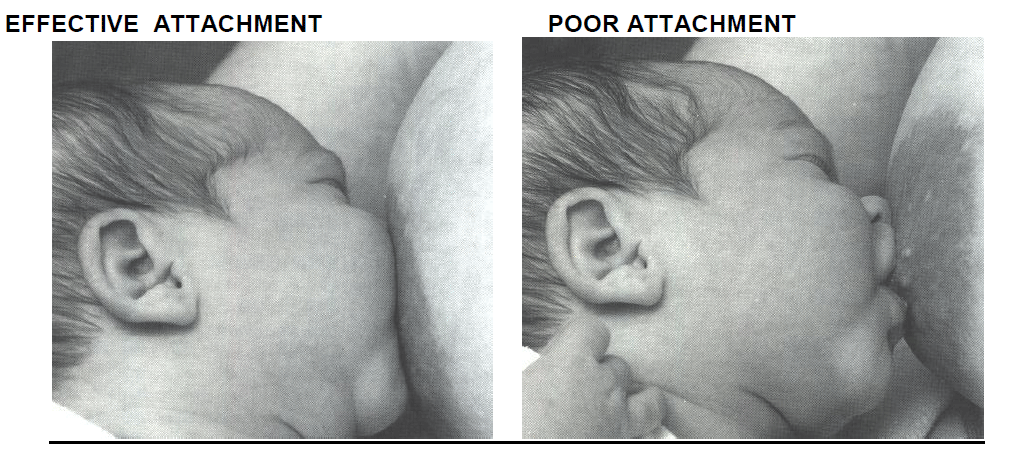 For example, you can hold the child in your arms and say something to him in a singsong voice. Remember, your baby loves to hear your voice, even if you're just reading your favorite magazine or newspaper.
For example, you can hold the child in your arms and say something to him in a singsong voice. Remember, your baby loves to hear your voice, even if you're just reading your favorite magazine or newspaper. - See the world through your child's eyes. Watch your baby. Imagine what he is looking at, feeling or trying to do. Try to understand what he really likes and enjoys, and what he doesn't like or scares. Maybe he is happy to be socialized and enjoys spending time in the arms of other family members? Or does he prefer to watch what is happening while in your arms?
- Be flexible. Most newborns do not have a fixed sleep pattern during the day and night. This means that you should not expect your baby to follow a strict routine. It is best when you respond to his desire to eat, sleep or play.
Remember, you are the most important part of your child's life. If you have doubts, questions, or difficulties in establishing and maintaining a relationship with your baby, seek help - this is very important for both of you, especially when your child is very young.
 Secure attachment develops from your ability to manage your stress, respond to your baby's cues, and successfully soothe your infant.
Secure attachment develops from your ability to manage your stress, respond to your baby's cues, and successfully soothe your infant.


